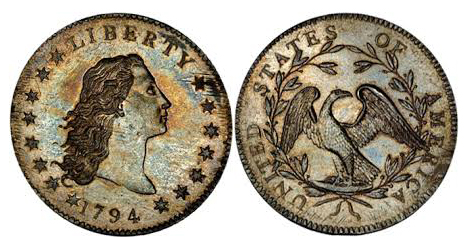A 1794 US silver dollar that sold for over ten million dollars in 2013 is going a European tour this spring, where it will be displayed alongside an original copy of the Declaration of Independence. More information about the exhibition can be found here and the itinerary is as follows.
Prague: February 9-11
Warsaw: February 16-18
Tallinn: February 22-23
Helsinki: February 25-26
Stockholm: Feb 29-March 1
Oslo: March 3-6
Dublin: March 12-13
London: March 18-20
The tour was organized by the Samlerhuset Group, which also published a fine volume on “the rise of the dollar” that I contributed an essay and the introduction for.
Today of course the United States dollar is recognized and valued around the world, but this contemporary power has obscured its humble origins. The first silver dollars struck at the newfound mint in Philadelphia in late 1794 were modeled on Spanish silver coins that were the dominant form of currency in circulation at the time. The equipment was so inadequate and the government reserves of silver were so small, that only seventeen hundred or so coins were produced, many of them weakly struck. Still, the coin was significant in the sense that it affirmed American independence. Thomas Jefferson famously intoned that “Coinage is peculiarly an Attribute of Sovereignty. To transfer its exercise to another country, is to submit it to another sovereign.” The iconography of the coin, and indeed its very existence, was a material reflection of the revolutionary spirit upon which the United States was founded. Check out the catalogue for the full story of the origin of this seminal coin.


